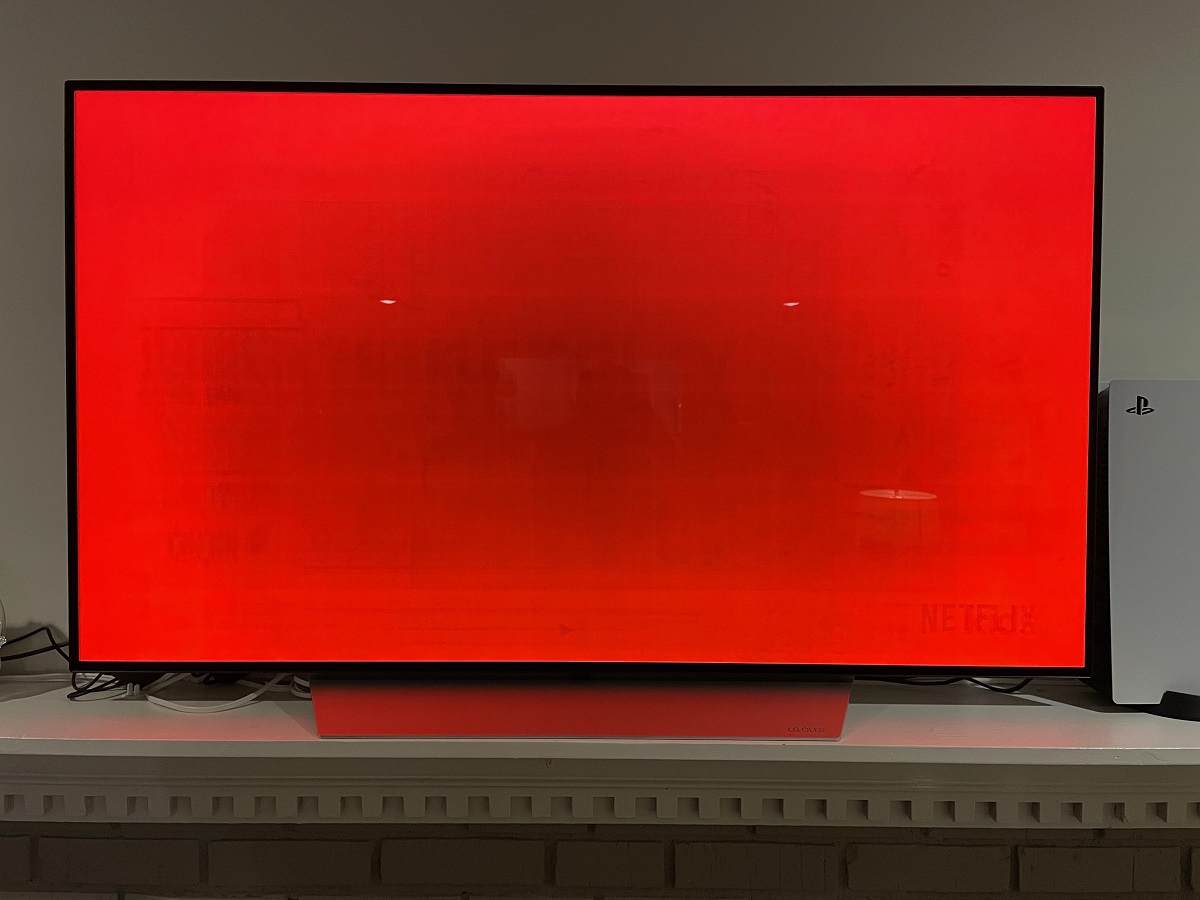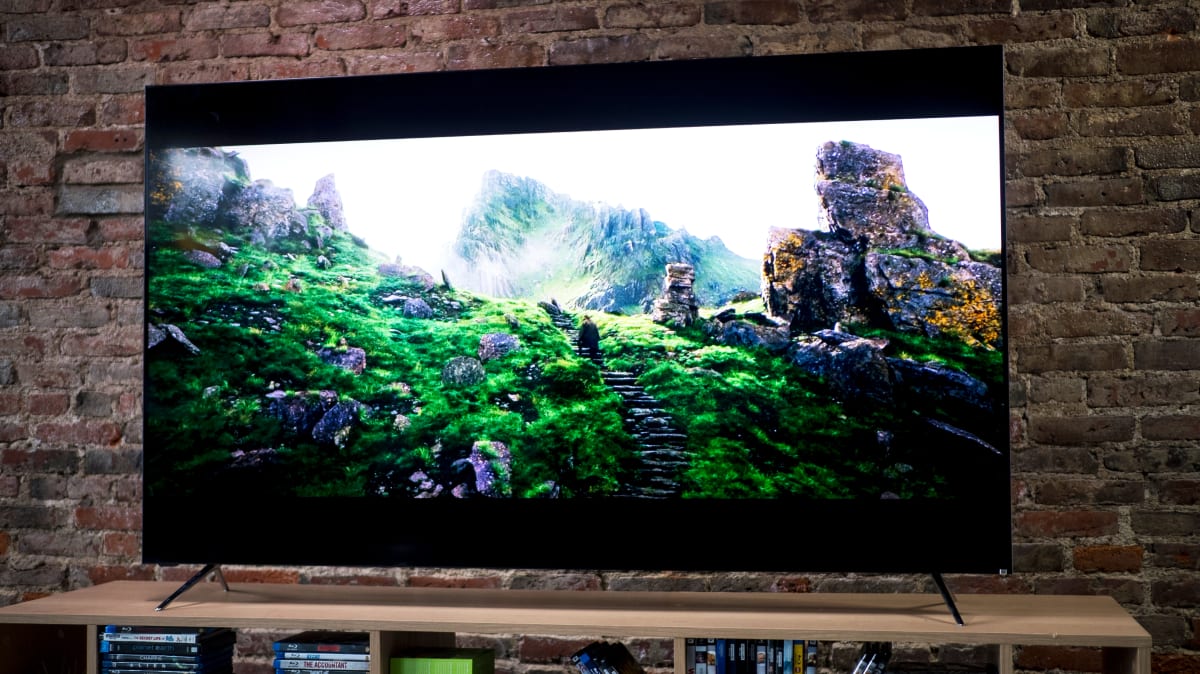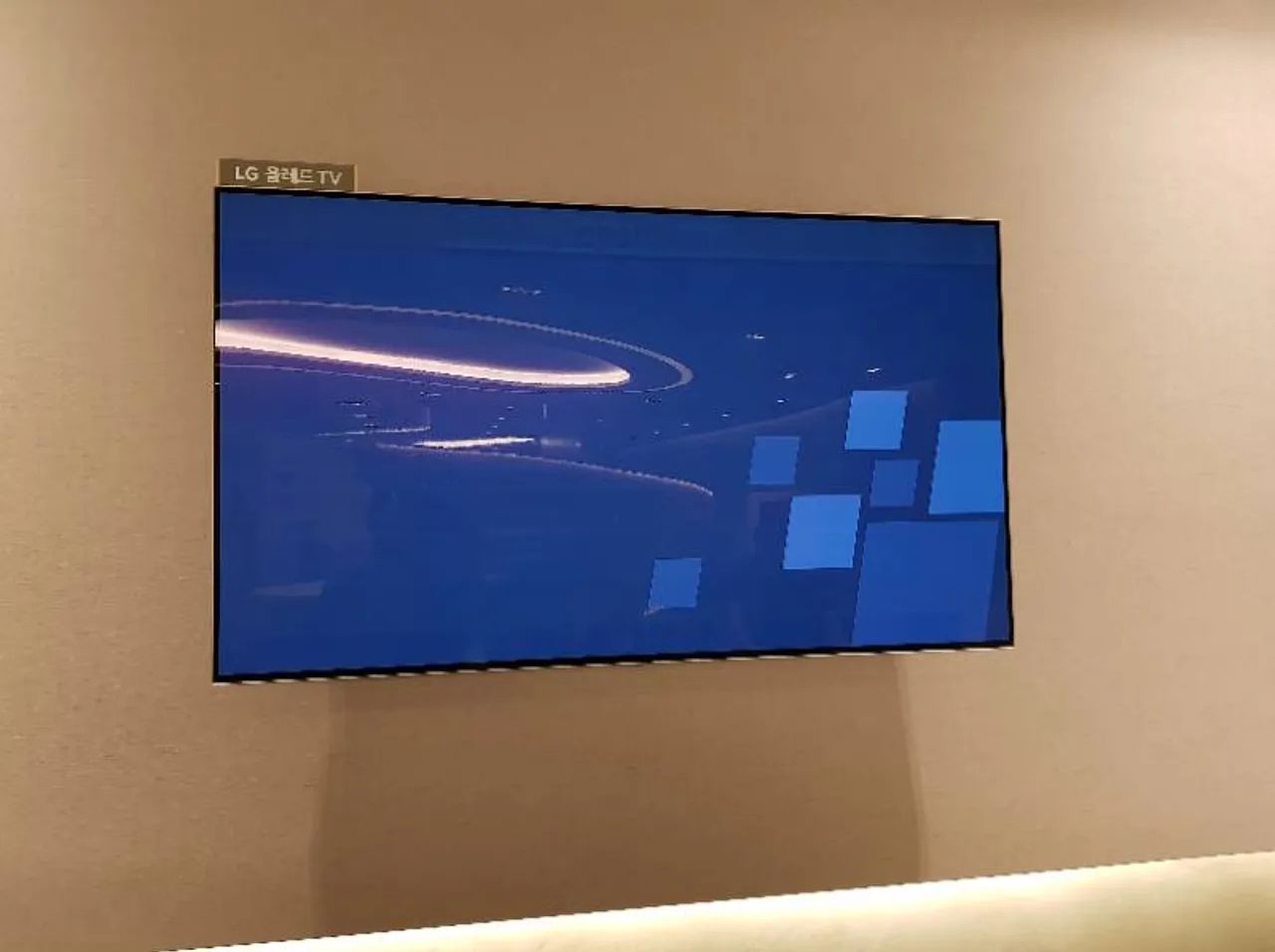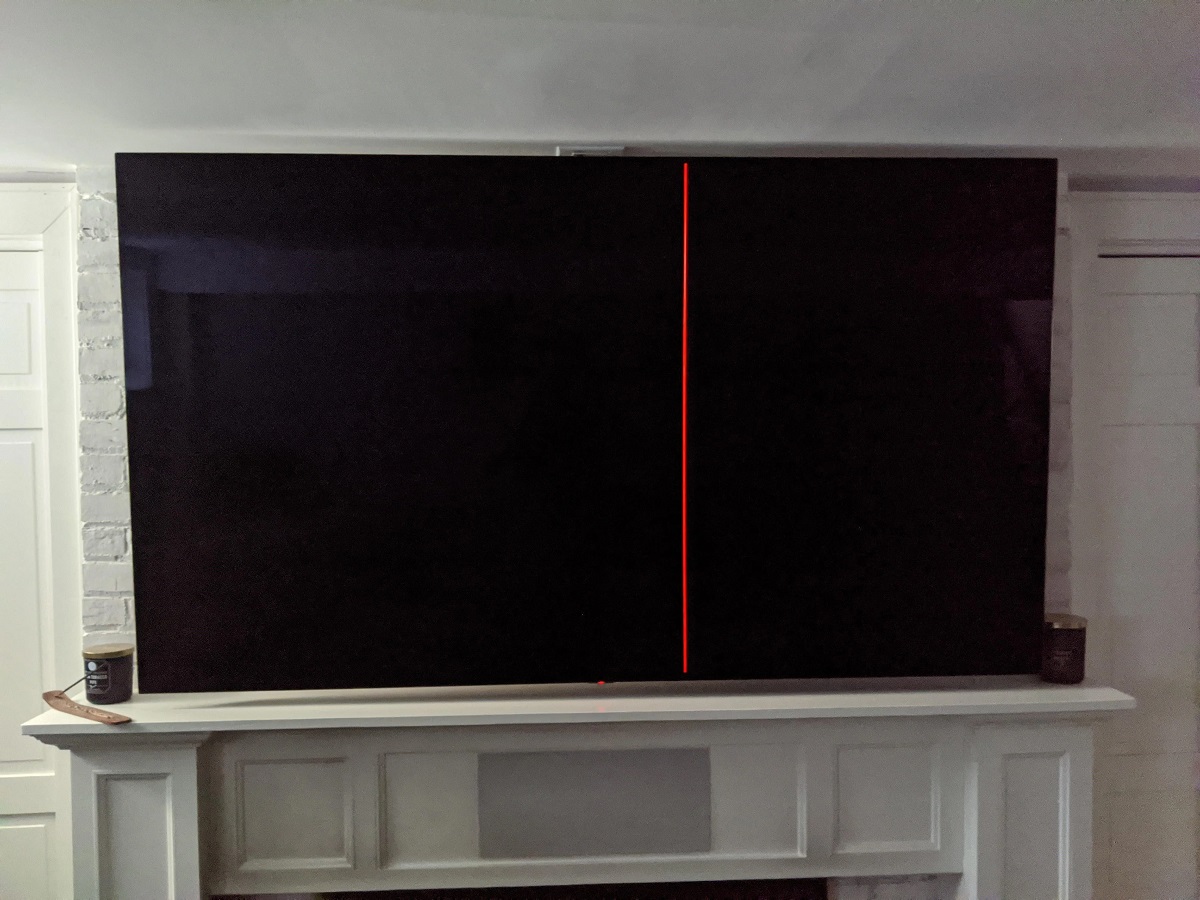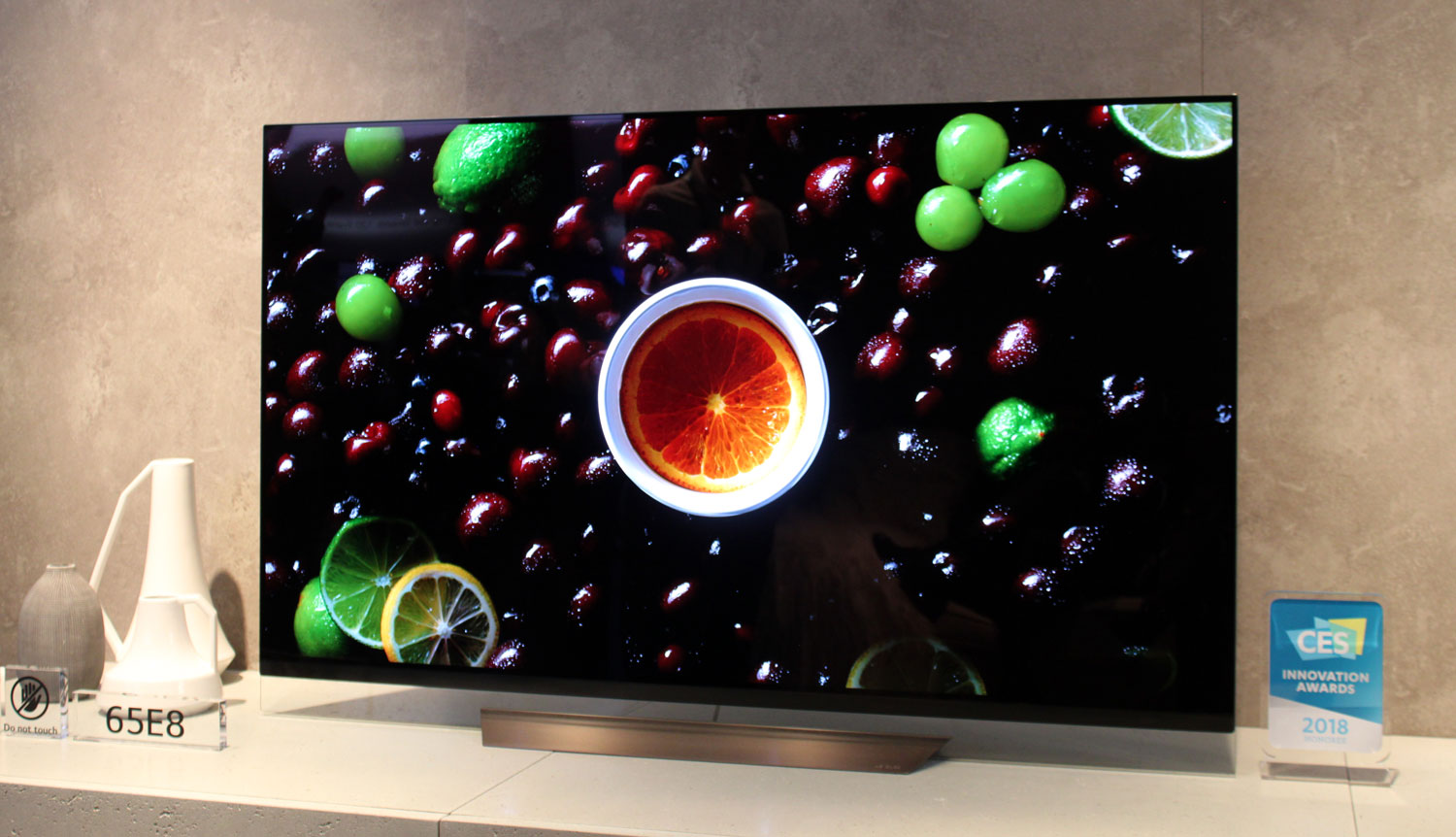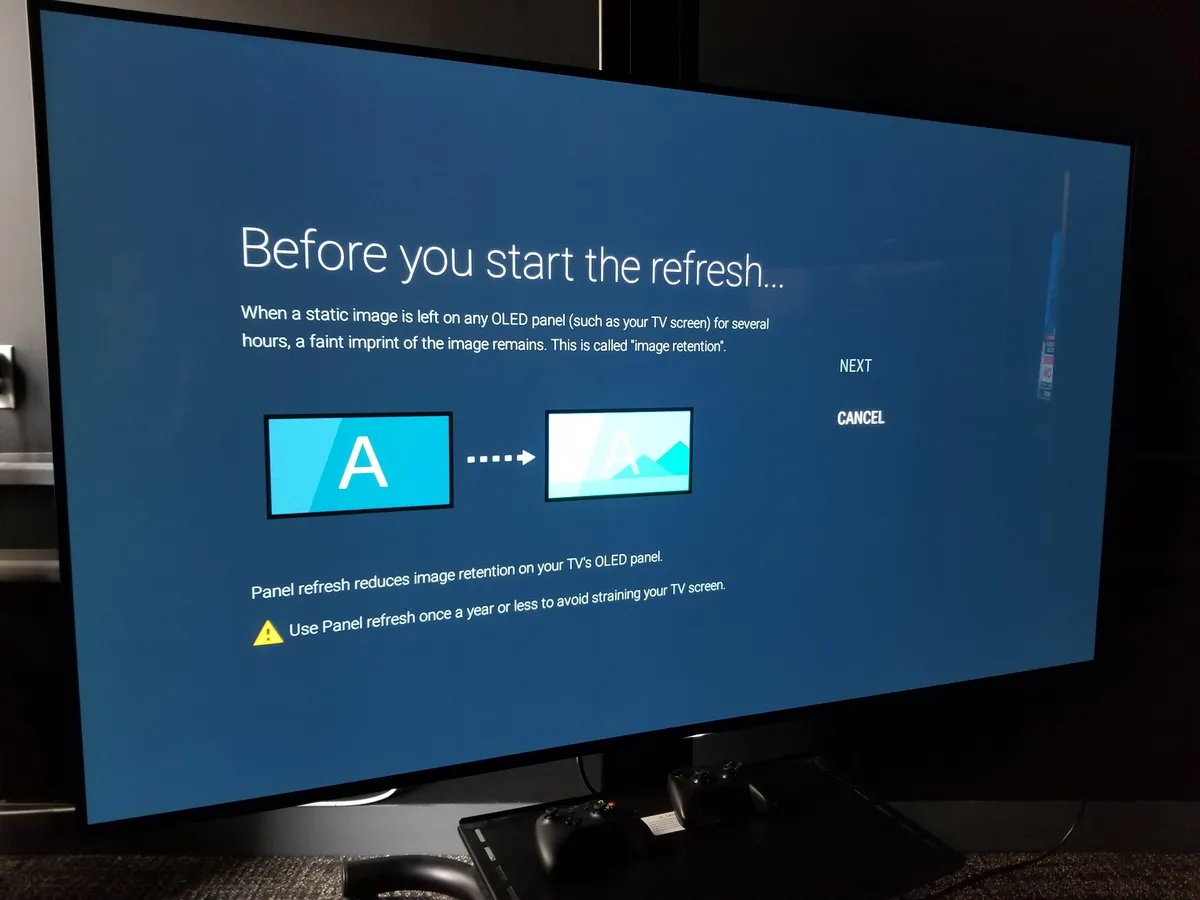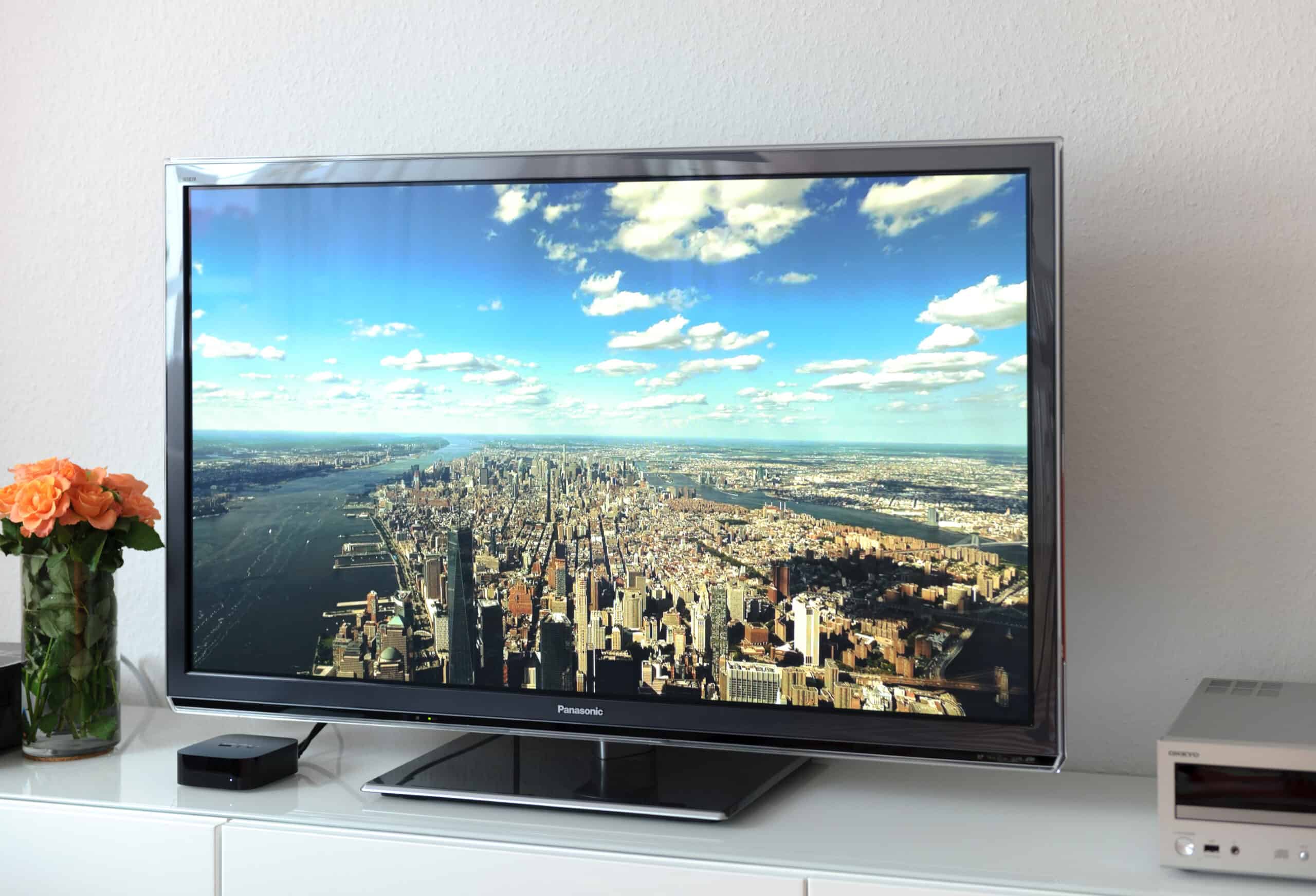How Long for OLED TV to Get Burn-In
OLED (Organic Light-Emitting Diode) TVs have gained popularity for their stunning picture quality and vibrant colors. However, one concern that many people have when considering purchasing an OLED TV is the issue of burn-in. Burn-in refers to when certain static images or elements are displayed on the screen for extended periods, causing them to become permanently visible even when the image changes. So, how long does it take for an OLED TV to get burn-in?
The time it takes for burn-in to occur on an OLED TV depends on various factors, including usage patterns, screen brightness, and content displayed. OLED TVs are more susceptible to burn-in than other types of display technology, such as LED or LCD, because each pixel in an OLED panel emits its own light. This means that if a static image is displayed for a prolonged period, those pixels can age unevenly and result in burn-in.
Under normal viewing conditions, such as watching varied content, playing video games, or streaming movies, it would take a significant amount of time for the OLED TV to experience burn-in. Manufacturers have taken steps to minimize the risk of burn-in by implementing pixel shifting and screen savers that prevent static images from being displayed for too long.
On average, it can take thousands of hours of cumulative static image display for burn-in to become noticeable on an OLED TV. This could equate to several years of typical usage before any signs of burn-in become apparent. It’s worth noting that OLED TVs have come a long way in terms of burn-in prevention, with newer models being more resistant to this issue.
That being said, it’s essential to practice proper usage and take precautions to minimize the risk of burn-in. Some tips to help prevent burn-in on your OLED TV include:
- Lowering screen brightness to reduce the overall stress on the pixels.
- Avoiding displaying static images or logos for an extended period.
- Using screen savers or pixel shifting features provided by the TV.
- Varying content and not leaving the TV on a single static image for too long.
By following these guidelines, you can significantly extend the lifespan of your OLED TV and minimize the chances of burn-in. However, if you do notice any signs of burn-in on your OLED TV, there are a few steps you can take to address the issue.
Overall, while the risk of burn-in exists with OLED TVs, it is considerably lower compared to what it used to be. With proper usage and care, you can enjoy the incredible picture quality that OLED technology offers without significant concerns about burn-in.
Introduction
OLED (Organic Light-Emitting Diode) TVs have revolutionized the television industry with their stunning display quality and vibrant colors. As technology advances, OLED TVs have become increasingly popular among consumers looking for the ultimate home entertainment experience. However, concerns about burn-in have left some potential buyers hesitant to make the switch.
Burn-in is a phenomenon that can occur on OLED TVs when static images or elements are displayed on the screen for extended periods, resulting in permanent image retention. This means that even when the content changes, remnants of the previous image can still be visible. Naturally, this has raised questions about the longevity and durability of OLED TVs.
Understanding burn-in and how it can impact the lifespan of an OLED TV is crucial for making an informed decision when considering a purchase. In this article, we will explore the factors that contribute to burn-in, the expected lifespan of an OLED TV, and how long it takes for burn-in to occur under different usage scenarios. Additionally, we will provide practical tips to prevent burn-in and offer guidance on what to do if your OLED TV does experience burn-in.
It’s important to note that while OLED TVs offer unrivaled picture quality and are generally reliable, the potential for burn-in does exist. However, the severity and frequency of burn-in incidents have significantly decreased over the years, thanks to improved technology and preventative measures implemented by manufacturers.
By understanding the factors that influence burn-in and taking appropriate precautions, users can enjoy their OLED TVs to the fullest while minimizing the risk of image retention issues. So, let’s delve deeper into the world of OLED TVs, explore how burn-in occurs, and discover ways to maximize the lifespan of these impressive devices.
What is OLED TV Burn-In
OLED TV burn-in refers to the permanent marking or ghosting of images on the screen caused by prolonged display of static elements. Unlike traditional LCD or LED TVs, OLED TVs use organic compounds that emit light when an electric current is passed through them. Each pixel in an OLED panel is self-emitting, which allows for exceptional picture quality, deep blacks, and vibrant colors. However, this self-emitting nature makes OLED panels susceptible to burn-in.
Burn-in occurs when a static image or element is displayed on the screen for long periods, causing the affected pixels to age unevenly. Over time, this can result in visible remnants of the static image, even when the content changes. Common examples of elements that can cause burn-in include logos, video game HUDs (head-up displays), and news tickers.
It’s important to note that OLED TV burn-in is not the same as temporary image retention, which is a transient effect where a slight ghosting of an image may be visible for a short period after the content changes. Burn-in, on the other hand, is a permanent effect that remains visible even when new content is displayed.
While burn-in is a concern, it’s essential to emphasize that not all OLED TVs are created equal in terms of susceptibility. Manufacturers have made significant advancements in OLED technology to reduce the risk of burn-in. Panel design improvements, pixel-shifting algorithms, built-in screen savers, and automatic dimming are some of the measures implemented to mitigate the impact of static images and prolong the lifespan of OLED TVs.
It’s also worth noting that burn-in is not a universal experience for OLED TV owners. Many users report using their OLED TVs extensively without any noticeable burn-in issues. The occurrence of burn-in depends on various factors, such as the specific usage patterns of the TV, the content displayed, and the overall care taken to prevent extended display of static images.
However, it is important to be aware of the possibility of burn-in when considering an OLED TV purchase. By understanding the nature of burn-in and taking appropriate measures to prevent it, users can ensure a prolonged lifespan and optimal performance from their OLED TVs.
Factors That Affect Burn-In
Several factors can contribute to the likelihood and severity of burn-in on an OLED TV. Understanding these factors is crucial for users to make informed decisions and take appropriate precautions to minimize the risk.
Usage Patterns: The way an OLED TV is used plays a significant role in the likelihood of burn-in. TVs that primarily display static images or have prolonged periods of static content are more susceptible to burn-in. Examples include news tickers, channel logos, video game HUDs, and stationary advertisements.
Screen Brightness: Higher screen brightness settings can accelerate the aging of pixels and increase the risk of burn-in. It is advisable to adjust the brightness level to a comfortable and appropriate setting, considering the environment and viewing conditions.
Content Type: Certain types of content are more likely to cause burn-in than others. Static elements, such as logos and tickers, are more problematic compared to dynamic content like movies or TV shows. Additionally, content with bright, high-contrast images may have a higher risk of burn-in.
Screen Time: The duration of static image display is a critical factor in burn-in. Prolonged exposure to static elements can increase the chances of permanent image retention. Limiting the time static content is displayed and ensuring that screen savers or pixel shifting features are enabled can help mitigate this risk.
Panel Quality: Not all OLED panels are created equal. The quality and design of the panel can affect its resistance to burn-in. Manufacturers continuously improve panel technology to enhance burn-in prevention measures, such as implementing pixel shifting algorithms and automatic screen dimming.
Preventive Measures: Taking proactive steps to prevent burn-in can significantly reduce the likelihood of encountering this issue. Adjusting screen settings, enabling screen savers, and varying content can help distribute the workload across pixels and minimize the risk of uneven aging.
While these factors can contribute to the occurrence of burn-in, it’s important to note that the risk has significantly reduced in newer OLED TV models. Manufacturers have made substantial advancements in burn-in prevention technology, and with responsible usage, the likelihood of encountering severe burn-in issues is significantly reduced.
By understanding these factors and being mindful of how the TV is used, users can enjoy their OLED TVs without undue concern about burn-in, ensuring a long-lasting and enjoyable viewing experience.
OLED TV Lifespan
The lifespan of an OLED TV is an important consideration for potential buyers. While OLED technology offers unmatched picture quality and visual excellence, some may wonder about the longevity of these cutting-edge TVs.
On average, OLED TVs have a theoretical lifespan of around 100,000 hours of use. This duration is equivalent to watching TV for 8 hours a day, every day, for more than 34 years. However, it’s important to note that this estimate is based on laboratory testing and may vary based on real-world usage patterns.
Several factors can influence the actual lifespan of an OLED TV. One of the primary factors is the level of screen brightness used. Higher brightness settings can accelerate the aging process of OLED pixels. It is recommended to use a brightness level appropriate for the environment and to avoid unnecessarily high settings to extend the lifespan of the TV.
Additionally, the content displayed on the TV can impact its lifespan. OLED pixels age unevenly when exposed to static elements for extended periods. Continuous display of still images, logos, or other static content can contribute to the risk of burn-in and potentially reduce the overall lifespan of the TV. Therefore, it is advisable to vary the content and avoid displaying static images for prolonged periods.
It is worth mentioning that the lifespan of OLED TVs has improved significantly in recent years. Manufacturers have implemented various technologies and features to minimize the risk of burn-in and extend the overall lifespan of their TVs. These include pixel shifting, screen savers, and automatic screen dimming. These measures help distribute the workload across pixels and reduce the impact of static images, resulting in a longer lifespan for OLED TVs.
It is also important to note that the lifespan of an OLED TV does not necessarily mean the TV will stop working immediately after the specified number of hours. Rather, it refers to the point at which the TV’s performance may start to degrade gradually. Even after reaching the theoretical lifespan, OLED TVs can still continue to function, but users may notice a gradual decrease in overall picture quality or an increase in the likelihood of burn-in.
Ultimately, the lifespan of an OLED TV can vary depending on usage patterns, content displayed, and the level of care taken in preventing burn-in. With responsible usage and following recommended guidelines, users can enjoy their OLED TVs for many years before any noticeable degradation in performance occurs.
How Long Does It Take for Burn-In to Occur
The timeframe for burn-in to occur on an OLED TV can vary depending on several factors. Understanding these factors can help users gauge the risk and take necessary precautions to prevent image retention issues.
Under normal usage patterns, such as watching a variety of content, playing video games, and streaming movies, it would typically take a significant amount of time for burn-in to become noticeable on an OLED TV. OLED technology has seen significant advancements in recent years, with improved pixel design and burn-in prevention techniques implemented by manufacturers.
In general, it can take thousands of hours of cumulative static image display for burn-in to become noticeable. This equates to several years of typical usage before any signs of burn-in may become apparent. Manufacturers have made extensive efforts to reduce the risk of burn-in by incorporating features such as pixel shifting and screen savers that prevent static images from being displayed for extended periods.
It’s important to note that not all OLED TVs are equally susceptible to burn-in. Newer models and higher-end OLED TVs tend to have improved resistance to image retention. The implementation of proactive measures, such as automatic pixel refreshing and screen dimming, further prolongs the time it takes for burn-in to occur.
Factors such as screen brightness, content type, and usage patterns can also impact the speed at which burn-in occurs. Higher screen brightness settings, prolonged exposure to static images or elements, and continuous display of bright, high-contrast content can increase the risk of burn-in and potentially accelerate its occurrence.
While burn-in is a possibility, the majority of users will never encounter significant issues if they follow responsible usage practices. By varying the content, avoiding prolonged exposure to static elements, and utilizing the built-in features provided by the TV, users can greatly minimize the risk of burn-in.
It’s essential to keep in mind that burn-in is not an immediate or inevitable consequence of owning an OLED TV. With regular usage and proper care, the average user can expect to enjoy their OLED TV for many years before any signs of burn-in become noticeable. By following recommended guidelines and being mindful of the content displayed on the screen, users can maximize the lifespan of their OLED TVs without experiencing any significant burn-in concerns.
Tips to Prevent Burn-In
While burn-in is a potential concern for OLED TV owners, there are several practical tips and precautions that can be taken to minimize the risk and prolong the lifespan of your TV:
- Adjust Screen Brightness: Lowering the screen brightness can help reduce the overall stress on the OLED pixels. It is recommended to find a comfortable brightness level that suits your viewing environment without unnecessarily straining the pixels.
- Avoid Static Images: Try to avoid displaying static images or elements on the screen for extended periods. This includes logos, news tickers, or any other stationary content. If possible, choose dynamic content or use a screensaver to prevent the same image from being displayed continuously.
- Use Screen Savers and Pixel Shifting: To further minimize the risk of burn-in, utilize screen savers or pixel shifting features that are often provided by the TV. These features help distribute the workload across the pixels and prevent any individual elements from remaining static for too long.
- Vary Content: Watching a variety of content, such as switching between movies, TV shows, and games, can help prevent burn-in. By avoiding prolonged exposure to the same images or elements, you reduce the likelihood of permanent image retention.
- Take Regular Breaks: If you plan to watch content with stationary elements, it is beneficial to take regular breaks or limit the duration of display to allow the pixels to relax and reduce the risk of burn-in.
- Enable Automatic Screen Dimming: Many OLED TVs offer automatic screen dimming features that adjust the brightness level based on the content being displayed. Enabling this feature can help minimize the strain on the pixels during brighter scenes while maintaining optimal picture quality.
- Update Firmware: Keep your OLED TV’s firmware up to date. Manufacturers often release firmware updates that include enhancements and improvements to prevent burn-in. Regularly checking for and installing these updates can help ensure that your TV is equipped with the latest burn-in prevention features.
- Consider a Screen Timer: Some OLED TVs have a built-in screen timer that can automatically turn off the display after a specified period of inactivity. Utilizing this feature when you know that the TV won’t be in use for an extended time can help minimize the risk of static images being left on the screen.
By following these tips and being mindful of how you use your OLED TV, you can significantly reduce the chances of burn-in and enjoy a long-lasting, high-quality viewing experience.
What to Do If Your OLED TV Gets Burn-In
If you notice burn-in on your OLED TV, there are a few steps you can take to alleviate the issue:
- Reduce Brightness and Use a Screen Refresher: Lower the screen brightness to reduce further stress on the affected pixels. Some OLED TVs have built-in screen refreshers or pixel refresher features. Initiate a screen refresh cycle through the TV’s settings, as this may help mitigate the visibility of burn-in.
- Display Dynamic Content: Switch to content with varied and dynamic images to help diminish the visibility of burn-in over time. By displaying moving images, the pixels can gradually reset and potentially minimize the noticeable effects of image retention.
- Use Content Noise Reduction: Some OLED TVs provide noise reduction features that can help reduce the visibility of burn-in. Enabling this feature may help soften the appearance of the burned-in areas and make them less conspicuous.
- Contact Manufacturer Support: If the burn-in issue persists or becomes more pronounced despite your efforts, consider reaching out to the manufacturer’s customer support. Explain the situation, provide any relevant details, and inquire about possible solutions or repair options. They may be able to assist you with further troubleshooting or offer advice specific to your TV model.
- Consult Professional Repair Services: In extreme cases where burn-in is severe or persists despite other efforts, seeking professional repair services may be necessary. These services specialize in TV restoration and can assess the level of burn-in and recommend possible solutions, such as panel replacement or advanced pixel recalibration.
It’s important to note that prevention is key when it comes to burn-in, but in the event that it occurs, these steps can help mitigate its effects. However, it’s crucial to manage expectations – while these measures may improve the visibility of burn-in, it’s unlikely that they will completely eliminate it.
It’s worth mentioning that some OLED TV manufacturers offer warranty coverage or extended protection plans that specifically address burn-in issues. Review the terms of your TV’s warranty or contact the manufacturer to determine if you have any options for repair or replacement.
Remember, burn-in is less common in newer OLED TV models and can be minimized with responsible usage and preventive measures. By following recommended guidelines and taking appropriate actions if burn-in occurs, you can continue to enjoy the cutting-edge display quality of your OLED TV.
Conclusion
OLED TVs offer unparalleled picture quality and vibrant colors, but concerns about burn-in have led to some hesitation among potential buyers. Understanding the nature of burn-in and taking preventive measures can help users make informed decisions and enjoy their OLED TVs without undue worry.
We have explored the factors that contribute to burn-in, including usage patterns, screen brightness, content type, and screen time. By being mindful of these factors, users can minimize the risk of static images causing permanent image retention on their OLED TVs.
While burn-in is a possibility, it typically takes thousands of hours of cumulative static image display for it to become noticeable. Manufacturers have made significant improvements in OLED technology, incorporating features such as pixel shifting, screen savers, and automatic screen dimming to reduce the risk. This results in a longer lifespan for OLED TVs and decreases the chances of encountering severe burn-in issues.
By following the provided tips, including adjusting screen brightness, avoiding static images, using screen savers, varying content, and enabling automatic screen dimming, users can further minimize the risk of burn-in and prolong the lifespan of their OLED TVs.
In the event that burn-in does occur, there are steps that can be taken to alleviate the issue, such as reducing screen brightness, refreshing the screen, displaying dynamic content, and consulting with the manufacturer or professional repair services if necessary.
Ultimately, OLED TVs continue to provide an exceptional viewing experience despite the potential for burn-in. With responsible usage, regular firmware updates, and appropriate care, users can enjoy their OLED TVs for many years before any noticeable degradation or burn-in issues arise.
Whenever considering an OLED TV purchase, it is important to weigh the benefits of the technology against the potential risks. By being aware of the factors that contribute to burn-in and taking proactive measures to prevent image retention, users can make the most of their OLED TVs and appreciate the extraordinary visual quality they offer.







